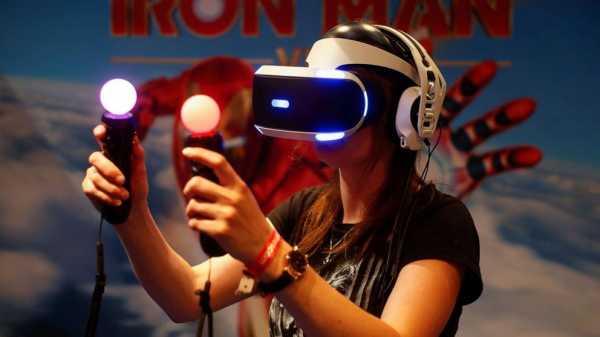
“But we have a lot of questions based on this general theory, such as to what extent can we predict cybersickness and is that useful for us in any way?” said Séamas Weech, a researcher at the University of Waterloo.
Critics of the sensory conflict theory point out that it fails to explain individual differences in cybersickness susceptibility. If everyone is experiencing a visual-vestibular discrepancy, then why doesn’t everyone feel like throwing up? And why do women report more symptoms of cybersickness during VR studies than men?
One reason could be the way VR headsets fit. Interpupillary distance, or the distance between your pupils, can be adjusted in today’s headsets to make sure that the user’s eyes are centered with respect to the two lenses inside. But that doesn’t mean they fit everyone well.
“The default for the headset is somewhat larger than the average [interpupillary distance] of the population … [which] matches very nicely with the average male [interpupillary distance]. It doesn’t do it so well for females,” said Bas Rokers, a psychologist at the University of Wisconsin-Madison.
(MORE: A little gold in your contact lenses could protect your eyes)
Studies have found that when the headset’s interpupillary distance is too large, users experience greater discomfort. In his research, Rokers has found that approximately 90% of women have pupils that are closer together than the default headset setting, and 27% of women’s eyes don’t fit the headset at all. In comparison, only 5% of men had had too narrow an interpupillary distance for the headset to match.
A lesser-known theory that may describe individual differences in cybersickness involves something called postural instability, which Stoffregen first published in 1991 to explain motion sickness in general. He has found evidence that some people experience a “wobbliness” in their stance during the beginning of a VR experience or boat ride that, for some reason, predicts who will feel nauseated later on. Stoffregen believes this is a more comprehensive explanation of motion sickness than sensory conflict theory.
“If I put you on a ship at sea, or if I put a head-mounted display on you, that mandates changes in the way that the body moves and the body is controlled,” he said. “Some people will make those changes quickly because they have the gift of natural fluency and skill — you know, they’re coordinated — and some of us will do it more slowly.”
(MORE: The unexpected way American homes may be seeking humanity’s roots: Study)
However, other researchers at the workshop didn’t buy Stoffregen’s theory – for example, one showed data from his own experiment that showed no correlation between postural instability and cybersickness — and so it appears the debate on the origins of cybersickness will continue.
But everyone agreed that illness associated with VR presents a serious obstacle toward widespread acceptance of the technology. This could become significant as VR moves beyond gaming and entertainment into areas such as job training, distraction therapy for pain, and other applications.
Inside Science is an editorially-independent nonprofit print, electronic and video journalism news service owned and operated by the American Institute of Physics.

Inside Science
Sourse: abcnews.go.com






